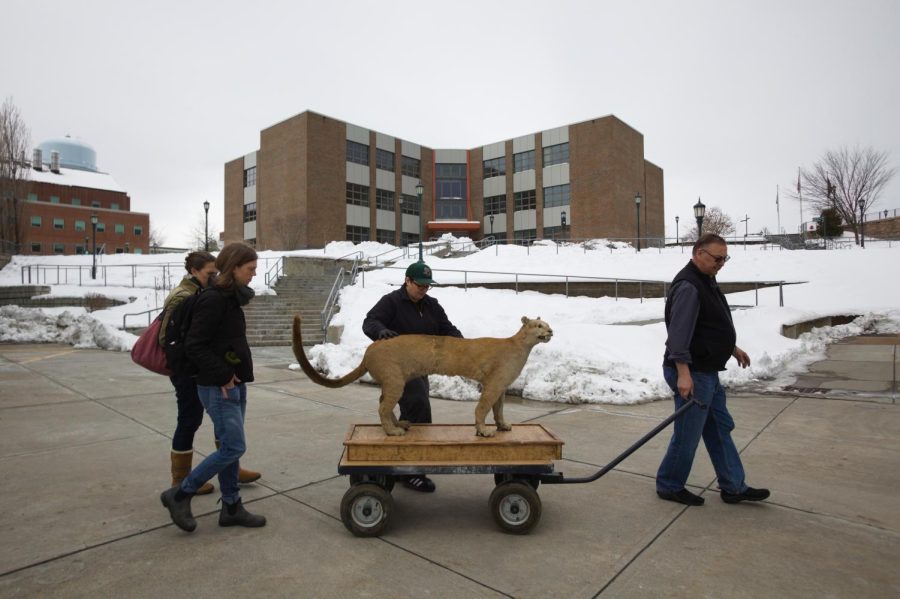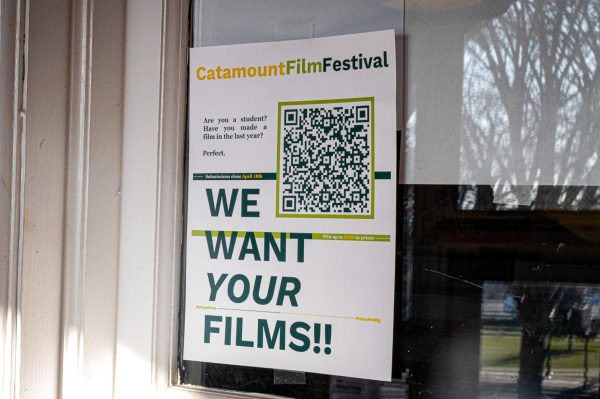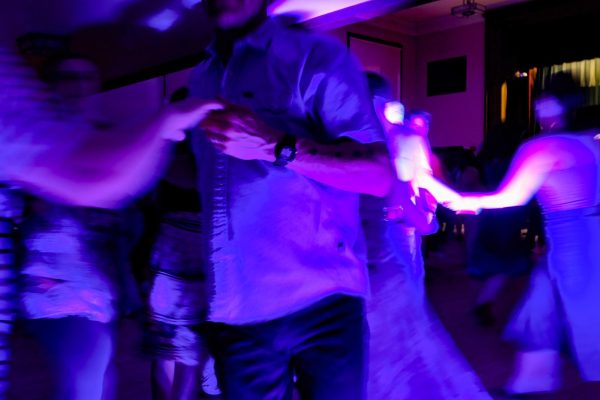Taxidermy catamount finds new home in Davis Center
(left to right) Sonia DeYoung, Suzy Zaner and Leigh Sweet transport the catamount to the Davis Center March 16.
UVM’s historic taxidermy catamount, long displayed outside the Benedict Auditorium in the Marsh Life Science building, has found a new, more public home in the Davis Center.
In summer 2021, the catamount was restored and stabilized by professional conservators, putting the idea of displaying it in a more public location into motion, said Sonia DeYoung, curatorial associate for the UVM Natural History Museum and lead for this project.
“After [the work was completed], our interim curator of zoology, Sara Helms Cahan, was like, ‘we should display this so everybody can see it,’” DeYoung said. “We didn’t want to put it back in the cases outside Benedict Auditorium because they’re not sealed in the best way and [are] kind of out of the way.”
After some searching for different locations, the wall to the right of the Davis Center’s first-floor information desk was eventually selected.
“It seemed like an awesome location to raise awareness about the collection and just get people excited about the cat,” DeYoung said. “There weren’t actually that many options for where that big case could fit.”
Compared to the display outside Benedict Auditorium, where it was part of a larger display case with other taxidermied animals, the new display shows just the catamount in a case from the Fleming Museum, as well as wall panels detailing the history and biology of catamounts in Vermont.
“Leigh Sweet in biology [has] been super helpful with all sorts of facilities stuff and he’s the one who made the wooden base that the cat has been mounted on,” DeYoung said. “He is going to help Suzy Zaner, who’s the preparator at the Fleming—she’s the one who found us the case.”
DeYoung, Sweet and Zaner worked together March 16 to move the catamount from Marsh Life Science to the Davis Center. Thankfully, the continuous bad weather present that week broke and allowed the team to move it without risk of damage.
Damaging the catamount could mean the loss of a unique scientific and historic specimen as the species is now extinct in Vermont and the Northeast in general, and is one of only 15 remaining specimens from the East Coast, according to a sign by the display.
The catamount has been at UVM since at least 1898, and was part of the UVM museum in Torrey Hall, before moving to the Fleming Museum and eventually to Marsh Life Science, DeYoung said.
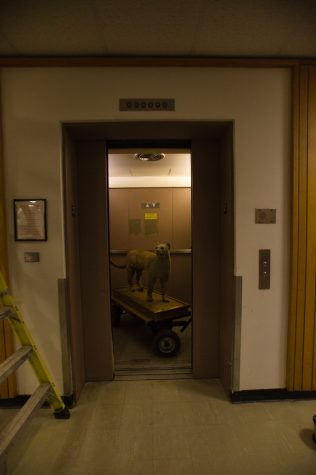
This importance and fragility forced the conservators who restored the catamount in 2021 to focus strictly on repairing and maintaining the catamount to protect against future damage, rather than making changes to its physical appearance, DeYoung said.
“The main thing that makes it look freakish is that the glass eyes were actually intended for an owl, but conservators said that replacing eyes is too risky to try and do, and it could just end up looking way worse,” DeYoung said.
Student opinion on the more public location seems to be a mix of horror and fascination.
“It just has this uncanniness about it, with the face and the eyes,” said senior Lauren Fennelly. “It’s, like, at the pit of the uncanny valley.”
Unease over the lack of quality of the original taxidermy work is a common theme among students.
“If there was an accurate [taxidermy], I think it would feel less scary, but it just doesn’t look like that was in the wild ever,” said sophomore Autumn Slack.
But after such a long time in various museum and lecture hall exhibits, some students, like sophomore Carly Sharpe, were in favor of moving the catamount once again. However, the jury is still out on whether the Davis Center is the best new home.
“She doesn’t belong in a closet, but I don’t know if she belongs here,” Sharpe said.
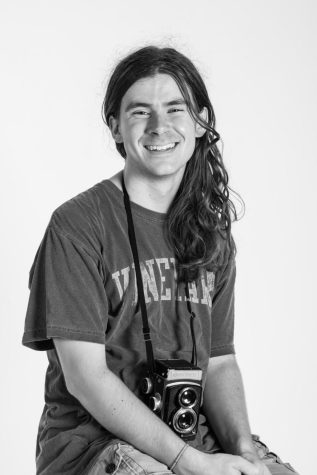
(He/they)
Mac Mansfield-Parisi is a senior from Merrimac, Massachusetts, majoring in electrical engineering. He has been part of the Cynic photo section...


